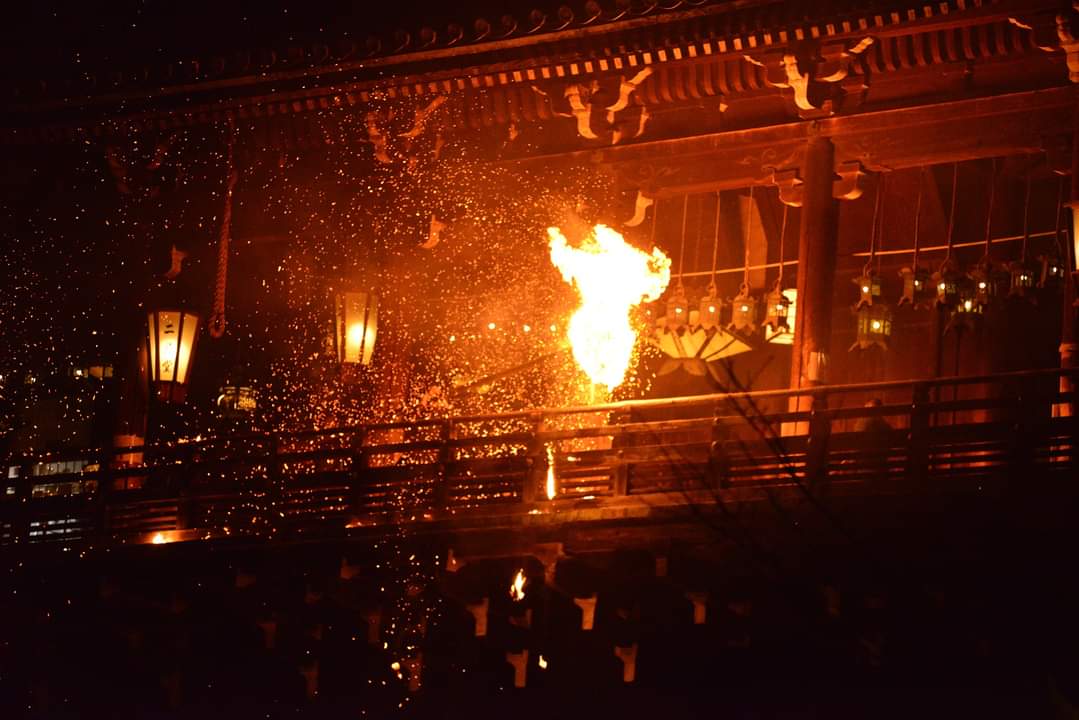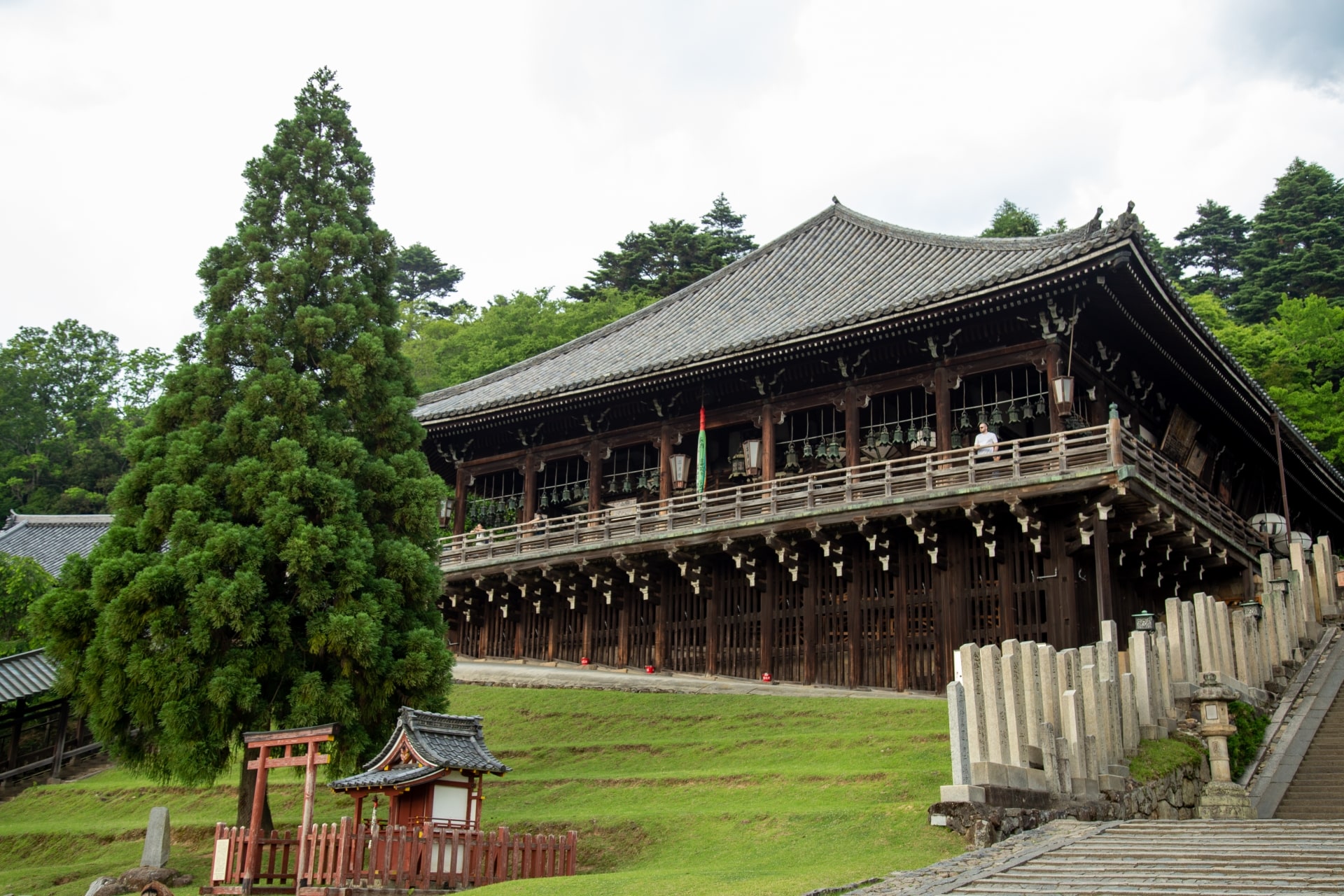March: Omizutori Festival
March 01, 2024

Omizutori Festival, Nara(Google Maps)
Bringing together fire and water for a unique purification ceremony, the Omizutori festival in Nara is a sight to behold. The dramatic tradition, also called Shuni-e, has been held annually for over 1,200 years and is one of Japan’s longest-running Buddhist ceremonies. Attended by visitors and gods alike, it is the perfect opportunity to be purified in time for the blooming of cherry blossom.
The ancient capital of Nara is known for its bowing deer and stunning giant Buddha, however for the first two weeks of March, the focus turns to the fiery ritual at Nigatsu-do Hall, a sub-temple of the better-known Todai-ji. Meaning “second-month hall,” Nigatsu-do was built especially for the Omizutori festival. The event was originally held in the second month of the lunar calendar, reflected in its alternative name Shuni-e, meaning “second-month ceremony.”
At the top of a small hill, the hall has a picturesque balcony offering beautiful views on sunny days, and the perfect ledge for priests with burning torches to purify those below during this unusual event. Despite the hall burning down in 1667 during the ceremony, it was rebuilt and continues to host the event, albeit with fire-safety planning in place.

Todai-ji Temple, Nara(Google Maps)
Omizutori means “sacred water drawing” and refers to the final part of the two-week long process of purification. Centuries ago, priest Jitchu is said to have observed gods performing a cleansing ritual while hiking through the mountains north of Nara and was determined to recreate this himself, inviting gods to attend alongside humans. Legend has it that river god Onyu-Myojin arrived late and offered scented water as an apology, drawing a spring from the ground at the temple. Now a well, it is believed to be connected to a well at Jingu-ji Temple in Obama City, Fukui Prefecture where priests there take part in the Omizu-okuri (sacred water sending ceremony) on March 2nd. The water takes 10 days to reach Nara, where it is presented to the hall’s principal image Juichimen-Kannon in a pot as old as the ceremony itself. The water is said to have healing properties and is offered first to the deities and then to spectators. The actual drawing of water takes place in the early hours of the 13th and is held in private, followed by the secret Dattan ceremony.
Visitors will be pleased to know that one of the most dramatic events, the parade of burning torches called Otaimatsu, takes place at 7 p.m. each day throughout the two-week period (aside from the 12th, 7:30 p.m. and the 14th, 6:30 p.m.). Purifying the space for the gods, 10 six-meter taimatsu torches are carried across the balcony in pairs by young monks, throwing glowing embers into the crowds below. For an even more impressive sight, the night of the 12th sees 11 eight-meter torches used and on the final night, all 10 torches are brought up at once for a bright and fast-paced final ceremony. While you may naturally try to avoid the embers, they are said to grant protection from evil spirits and crowds are hustled along on the busiest nights to ensure all can be purified.

Japanese Sake
Nara’s reputation as the home of sake stems from the development of sake production techniques towards the end of the Muromachi Period (1336–1573). To experience them yourself, both the Imanishi Sake Brewery and Harushika Sake Imanishi Seibei Store run tours and tastings, while Nara Izumi Yusai offers tasting sessions in a bar-setting. Snack on narazuke (local Nara pickles) and pressed mackerel sushi wrapped in persimmon leaves and you’ll be guaranteed to get into the local spirit.
Once the festival ends, it is believed that Spring is able to truly begin, with cherry trees beginning to blossom. While January is often seen as the new year, embracing the fresh awakening of spring may be a brighter chance to re-energize and start afresh, with a little purification to help you along the way.
For more details, contact DMC Japan to discuss ideas, locations and rates.
Contact Us


